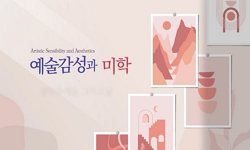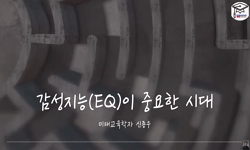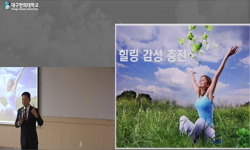“한국인의 감성이란 무엇인가?”를 인식하는 하나의 방법으로서 “일본인의 감성이란 무엇인가?”를 비교문학적으로 고찰하고, 특히 일제강점기에 한국인에게 이식된 일본인의 감성이 어...
http://chineseinput.net/에서 pinyin(병음)방식으로 중국어를 변환할 수 있습니다.
변환된 중국어를 복사하여 사용하시면 됩니다.
- 中文 을 입력하시려면 zhongwen을 입력하시고 space를누르시면됩니다.
- 北京 을 입력하시려면 beijing을 입력하시고 space를 누르시면 됩니다.

일본인의 감성과 애니미즘 -일제강점기 정지용 시를 중심으로- = Japanese Sensibility and Animism: Chung Jiyong's Poetry Composed during the Japanese Colonial Rule of Korea
한글로보기https://www.riss.kr/link?id=A104021376
-
저자
정승운 (전남대학교)
- 발행기관
- 학술지명
- 권호사항
-
발행연도
2009
-
작성언어
Korean
-
주제어
감성 ; 정지용 ; 애니미즘 ; 이미지즘 ; 의인법 ; 활유법 ; 모노노아와레 ; 영적주체 ; 만물의 영장 ; sensibility ; Chung Jiyong ; animism ; imagism ; personification ; living way of expression ; spiritual subject ; the lord of all creature ; sensibility ; Chung Jiyong ; animism ; imagism ; personification ; living way of expression ; spiritual subject ; the lord of all creature
-
등재정보
KCI등재후보
-
자료형태
학술저널
- 발행기관 URL
-
수록면
65-90(26쪽)
-
KCI 피인용횟수
1
- 제공처
- 소장기관
-
0
상세조회 -
0
다운로드
부가정보
국문 초록 (Abstract)
“한국인의 감성이란 무엇인가?”를 인식하는 하나의 방법으로서 “일본인의 감성이란 무엇인가?”를 비교문학적으로 고찰하고, 특히 일제강점기에 한국인에게 이식된 일본인의 감성이 어떻게 발현되었는지를 살펴봄으로써, 한국인의 감성과 일본인의 감성이 어떻게 다른가를 논했다. 연구방법은 애니미즘이라는 용어를 중심으로 하는 ‘문학의 민속학적 연구’다.
모노노아와레(物のあわれ)에서의 모노(物)는 人間靈 이외의 즉 동물, 식물, 무생물의 精靈이다. 아와레는 두 가지의 뜻이 있다. 하나는 아와레(哀れ, 憐れ)로서 “애처로움. 가엾음. 불쌍함. 딱함. 가련함. 초라함. 비참함.”의 뜻과 또 하나는 앞파레(あっぱれ, 天晴れㆍ遖)로 “훌륭함. 장함. 눈부심. 갸륵함.”의 뜻이다.
모토오리 노리가나는 아와레(阿波禮)라는 마음은 단지, “하늘이 개었다는 즐거움으로만 볼 것이 아니라, 그때의 그 여러 신들의 마음을 보아야 할 것이다. 아와레는 비단 즐거움만의 형용이 아니다. 재미있음, 즐거움 등은 모두가 문학의 특질을 규정하는 중요한 말이고, 나아가 아와레는 일본문학의 본질이다. 명랑ㆍ활달ㆍ청명하고 정직하다는 의미”라 하였다.
모노노아와레는 人間靈 이외의 즉 동물, 식물, 무생물의 精靈이 기쁘거나 슬퍼함을 뜻한다고 할 수 있다. 일본어에서 ‘슬프다(かなしい)’는 형용사가 ‘悲しい/▽哀しい/▽愛しい’(三省堂「大辞林 第二版」)와 같이 悲ㆍ哀ㆍ愛라는 세 가지 한자가 함께 쓰인다는 점은 주목할 만하다.
의인법이나 활유법에는 의식적이건 무의식적이건 애니미즘이 들어 있다고 해도 과언이 아니다. 애니미즘이 한국에서는 의인법으로, 일본에서는 활유법으로 표현되고 있다.
일본문학에 내재된 애니미즘은 일제강점기 한국근대문학에 지대한 영향을 끼쳤다. 정지용이 말한 Incarnation은 신적인 존재가 인간의 육체 안으로 들어와서 인간 가운데 거하는 것은 일본문학의 언령(言靈)신앙과 일치한다. 시인은 언령(言靈)신앙을 통해 영혼과 교감하여 무생물과 언어에 생명을 부여하는 Life Giving을 하고 있다.
문학에서 보이는 한국적인 감성은 샤머니즘을 기반으로 하는 인간중심적 표현이고, 일본적인 감성은 애니미즘을 기반으로 하는 모노(物)중심적 표현이 주를 이룬다고 할 수 있다. 일본문학은 천신과 지신을 제사지내는 제사문학이다. 최재서가 조선인이 일본인이 되기 위해서는 천신과 지신을 받들어 모시는 정신을 기르지 않으면 안 된다고 하고 있는 바와 같이, 비록 일제강점기라는 시대적 상황에 굴복할 수밖에 없다고는 하더라도, 최재서의 ‘일본문학 제사문학론’은 한국인과 일본인의 중요한 차이점을 시사하고 있다고 할 수 있다
영적인 주체가 인간과 동등하게 무생물일 수 있다는데 대해 일본인은 이상하게 보지 않는다는 것이다. 한국인이 꽃에 물을 주면서 몇 시간씩이나 꽃과 이야기한다면 정신이 이상한 사람으로 보지만, 일본인은 전혀 그렇게 보지 않는다는 것이다. 하지만 한국인뿐만 아니라 전 세계의 현대인들이 외롭거나 우울할 때 쇼핑을 하거나 물건을 훔쳐서 위안을 삼는 것을 볼 때 물건을 동격으로 보느냐 하등한 것으로 보느냐의 차이일 뿐 모두 애니미즘에서 자유롭지 못하다고 할 수 있다.
일본인의 감성은 서구의 이성과 감성의 이분법보다 애니미즘에 기반을 둔 모노(物)와의 영혼 교감으로 표현되는 데 비해, 한국인의 감성은 인간 ...
다국어 초록 (Multilingual Abstract)
This paper discusses differences between Korean and Japanese sensibilities by examining "what Japanese sensibility is?" in terms of comparative literature, in order to recognize "what Korean sensibility is?". The primary research methodology consists ...
This paper discusses differences between Korean and Japanese sensibilities by examining "what Japanese sensibility is?" in terms of comparative literature, in order to recognize "what Korean sensibility is?". The primary research methodology consists of folklore studies of literature by focusing on the term, animism.
Mono in Monoaware includes the spirits of animals and plants, excluding human spirit. Aware means two things: one includes "miserable," "poor," "wretched," "pathetic," "shabby,"; the other (apare) "wonderful," "splendid," "bright," "virtuous".
Motoori norigana says that mind as aware is not the delight which comes when the sky is bright, but the minds of various gods. Aware is not merely the adjective of delight, but also includes the meanings of literary quality like happiness and pleasure; it further represents the essence of Japanese literature which consists of cheerfulness, activeness, clearness, and honesty".
Mononoware can be defined as sadness and delight in the spirits of animals and plants excluding human spirits. it is remarkable that in the Japanese Language the adjective "sad" is used along with the three different Chinese Characters (悲, 哀, 愛).
It can be said that animism is included in personification and living way of expression, whether consciously or unconsciously. Animism is used as personification in Korea and living way of expression in Japan respectively.
Animism connoted in Japanese Literature had a great effect upon the Korean Literature of Japanese colonial rule of Korea. The incarnation Chung Jiyong once mentioned means that a divine entity staying in human flesh concords with the faith in the language spirit of Japanese Literature. Poets communicates with spirits through the faith in the language spirit, supplying animals and plants with life.
Korean sensibility in literature, based upon shamanism, is an anthropocentric expression, while Japanese sensibility, based upon animism, primarily consists of expression of things as they are. Japanese Literature is sacrificial rite which pays tribute to the gods in both the heaven and the earth. Choi Jaeseo once said that Koreans should cultivate the spirit paying respect to the gods in the heaven and earth in order to become Japanese people. Admitting that he said it under the circumstances of Japanese colonial rule of Korea, his literary theory of Japanese Literature as a sacrificial rite shows an important difference between Koreans and Japanese.
The fact that spiritual subject can be identified with animals and plants is acceptable to Japanese without hesitation. Koreans who converse with flowers for hours by providing them with water might be considered to be insane; however, Japanese who do the same thing looks natural. But modern people including Korean go shopping and steal something to ease their loneliness and depression; these activities tell us that ordinary people are not free of animism, although there are some differences in terms of looking at things.
Japanese sensibility, based upon animism rather than western dichotomy of reason and emotion, is expressed in the way of spiritual communication with things; Korean sensibility is expressed with it basis on humanistic shamanism. Imagimistic poetry of Chung Jiyong might be the result of Japanese animism poetry with a mixture of Korean sensibility.
참고문헌 (Reference)
1 아카타 미츠오, "정령신앙과 의례의 민속연구-애니미즘의 종교사회-" 帝塚山大學出版會 3-, 2007
2 사사키 유키츠나, "일본적 감성과 단가" 岩波書店 1999
3 임경택, "일본 사회 일본 문화 : 동경대 특별 강좌" 笑臥堂 136-158, 2009
4 최재서, "받들어 모시는 문학" 실천문학사 387-401, 1986
5 윤동주, "谷間 in: 윤동주시집" 민음사 1990
6 다카시마 모토히로, "日本人의 感情" 페리칸社 2000
7 구연식, "新感覺派와 「鄭芝溶」詩 硏究" 19 : 1982
8 기타자와 마사쿠니, "感性으로서의 日本思想-하나의 마루야마 마사오 비판-" 藤原書店 196-, 2002
9 "大辞林 第二版" 三省堂
10 박종화, "(1973. 1. 20), 「월탄 회고록」, 한국일보"
1 아카타 미츠오, "정령신앙과 의례의 민속연구-애니미즘의 종교사회-" 帝塚山大學出版會 3-, 2007
2 사사키 유키츠나, "일본적 감성과 단가" 岩波書店 1999
3 임경택, "일본 사회 일본 문화 : 동경대 특별 강좌" 笑臥堂 136-158, 2009
4 최재서, "받들어 모시는 문학" 실천문학사 387-401, 1986
5 윤동주, "谷間 in: 윤동주시집" 민음사 1990
6 다카시마 모토히로, "日本人의 感情" 페리칸社 2000
7 구연식, "新感覺派와 「鄭芝溶」詩 硏究" 19 : 1982
8 기타자와 마사쿠니, "感性으로서의 日本思想-하나의 마루야마 마사오 비판-" 藤原書店 196-, 2002
9 "大辞林 第二版" 三省堂
10 박종화, "(1973. 1. 20), 「월탄 회고록」, 한국일보"
동일학술지(권/호) 다른 논문
-
감성의 형성 : 종교개혁 이전 시기 한 독일인의 불만 감정
- 전남대학교 호남학연구원
- 박양식 ( Yang Sik Park )
- 2009
- KCI등재후보
-
- 전남대학교 호남학연구원
- 이영석 ( Young Suk Lee )
- 2009
- KCI등재후보
-
감성의 형성 : 일본인의 감성과 애니미즘 -일제강점기 정지용 시를 중심으로-
- 전남대학교 호남학연구원
- 정승운 ( Seung Un Jeong )
- 2009
- KCI등재후보
-
감성의 형성 : 고통, 말할 수 없는 것: 역사적 기억에 대해 문학은 말할 수 있는가
- 전남대학교 호남학연구원
- 한순미 ( Soon Mi Han )
- 2009
- KCI등재후보
분석정보
인용정보 인용지수 설명보기
학술지 이력
| 연월일 | 이력구분 | 이력상세 | 등재구분 |
|---|---|---|---|
| 2028 | 평가예정 | 재인증평가 신청대상 (재인증) | |
| 2022-01-01 | 평가 | 등재학술지 유지 (재인증) |  |
| 2020-03-26 | 학회명변경 | 영문명 : Chonnam National University Honam Study Center -> Institute of Honam Studies |  |
| 2019-06-24 | 학술지명변경 | 한글명 : 호남문화연구 -> 호남학외국어명 : The Journal of Honam Area Studies -> The Journal of Honam Studies |  |
| 2019-01-01 | 평가 | 등재학술지 선정 (계속평가) |  |
| 2018-12-01 | 평가 | 등재후보로 하락 (계속평가) |  |
| 2015-01-01 | 평가 | 등재학술지 선정 (계속평가) |  |
| 2013-01-01 | 평가 | 등재후보 1차 FAIL (등재후보1차) |  |
| 2012-01-01 | 평가 | 등재후보학술지 유지 (기타) |  |
| 2011-01-01 | 평가 | 등재후보학술지 유지 (등재후보1차) |  |
| 2010-01-01 | 평가 | 신청제한 (등재후보1차) | |
| 2009-06-28 | 학술지명변경 | 외국어명 : 미등록 -> The Journal of Honam Area Studies |  |
| 2009-01-01 | 평가 | 등재후보학술지 유지 (등재후보2차) |  |
| 2008-08-18 | 학회명변경 | 한글명 : 호남문화연구소 -> 호남학연구원영문명 : Chonnam National University Honam Culture Research Center -> Chonnam National University Honam Study Center |  |
| 2008-01-01 | 평가 | 등재후보 1차 PASS (등재후보1차) |  |
| 2006-01-01 | 평가 | 등재후보학술지 선정 (신규평가) |  |
학술지 인용정보
| 기준연도 | WOS-KCI 통합IF(2년) | KCIF(2년) | KCIF(3년) |
|---|---|---|---|
| 2016 | 0.32 | 0.32 | 0.3 |
| KCIF(4년) | KCIF(5년) | 중심성지수(3년) | 즉시성지수 |
| 0.38 | 0.41 | 0.508 | 0.13 |




 KCI
KCI







